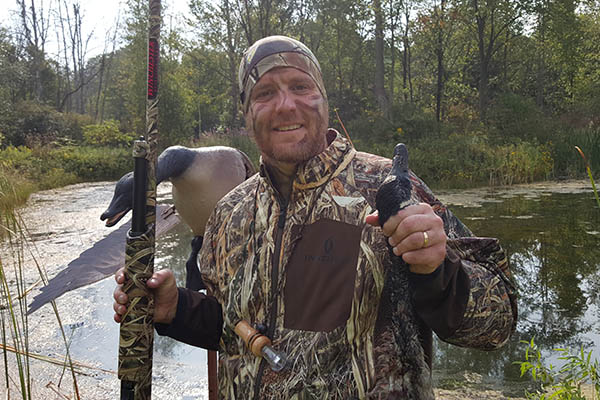
Last Updated on
“Hold tight boys…” My heart was pounding out of my chest as my friend and guide Josh Keith slowly coaxed the small flock of geese in the last few yards. “OK… Take ’em!”
“Boom, Boom, Boom, …” After the explosive volley, four of the seven geese lay in the September hay field. Soaking wet with dew, we scattered to the four winds collecting our harvest. With lots of high fives and back slaps, we nestled into our layout blinds for more shooting action. This particular hunt was a special occasion. Michigan’s youth waterfowl weekend coincided with our early goose season, so not only did I get to watch my son and his friends shoot some ducks, we all got to participate in the goose action. Needless to say, it was a great memory.
Relatively new to waterfowl hunting, I enlisted the help of friend and professional guide Josh Keith of Cuttn & Cacklin Outfitters in Otsego, Michigan. I first met Josh at a turkey hunting seminar I was giving at Cabela’s. At our next meeting, he whipped me in a state turkey calling contest! Needless to say, we have a lot in common and have been good friends ever since.
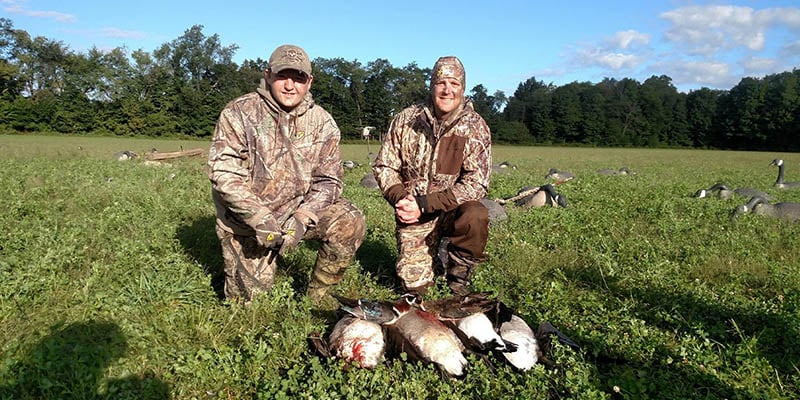
Josh is the best turkey and waterfowl caller I’ve ever seen. He also faces some physical challenges. Josh has Spina-Bifida and it affects everything from his mobility to his speech. I’ve learned a lot of life lessons from Josh. (as well as a bit about waterfowl hunting) As I’ve learned form him, I now know there’s a lot more to waterfowl hunting that just calling. Decoy placement and calling strategies need to change with the seasons, and what I learned from Josh and his partner Andrew Eshbaugh is worth sharing.
No matter the time of year, a few things are constant. The birds will land into the wind to help them maintain maximum control. The birds also take off into the wind to get them as high up as they need to be as quick as possible.
Early Season (Geese)
As a general rule of thumb, the early season birds tend to be local ones and know the lay of the land. The guys recommend keeping decoy spreads small, and placing them in small family groups of 5-6 birds. I’ve always heard that geese are “polite” and like to land where they have room, whereas ducks are “rude” and just land wherever they want.
“The key in early season is being on the X… you pretty much need to be near where they are planning to land. Scouting is huge in the early season…” Andrew was explaining to me that the local birds are cautious, and well aware of exactly where they want to be during the early season. Generally during the early season, birds are feeding in picked crop fields and hay fields. Blinds are important, because these birds know how the fields look regularly. Andrew and Josh like to hide in layout blinds in the fields, and use full body decoys. Sometimes, if they are not in the exact right spot, they’ll use gigantic, super-mag goose shells just to help catch the attention of passing by birds that mat not be planning on landing in their setup. Generally in the early season the guys will use a “U” shaped decoy setup, where they hunt at the bottom of the U, with the wind at their back. They’ll also use a “paw-print” style setup, with small family groups established, and a landing zone in the middle. The guys keep the calling to a minimum, as to not spook birds that are already planning on landing where they are. When they see birds in the distance, they’ll call and flag, in hopes of getting their attention. But usually, they sit tight, call a bit, and wait for the flocks to land.
It was funny- as we were collecting our birds from the hunt I described above, my son stopped to point out all of the fresh goose droppings in the hayfield. Josh had done his research ahead of time and we were in fact “in the X”.
Mid Season (Ducks and Geese)
For Josh and Andrew, the middle (or regular) season is where duck hunting starts to take priority. They’ll of course shoot geese if they come by, but usually the “quackers” are the main target. At this point, there are still local birds hanging around, but also migratory birds starting to show up. The guys hunt “full on” now, with everything they got. They use all sorts of decoys like motion wing “Mojo’s” and new to us this year (when they hunt with me because I own it) is a flapping motion decoy. They also call much louder and more aggressively. The whole point is to lure in any local birds, but they really get the attention of their northern cousins who are slowly making their way south. It’s important to note that for some reason, we’ve all noticed that geese do not like spinning wing decoys like the Mojo, but they do really get curious with the flapping ones. In regard to decoys spreads, geese use the old polite plan. They create pockets for the birds to land in, and use more of a “V” or “J” shaped pattern. With ducks, they throw them out in a huge spread, with a variety of divers and puddle ducks, doing everything from floating to eating.
Late Season (Geese)
In the late goose season (which in Michigan starts in January) many things need to be considered. First the birds have been shot at and harassed since September. They tend to be very nervous at this time of year. Second, they are much fatter with plenty of extra feathers to help protect them from shot blasts. The late season birds tend to be in giant flocks, some bigger than 50 birds! It is hard to get the entire flock to land or to peel off a handful to shoot at. This is where the guys give it all they got and put out every possible decoy. Shells, super-mags, socks, silhouettes, flags, anything that even looks like a goose gets set out. It’s important to keep the sets as tight as possible, because long shots won’t be much of an option anymore. With the extra feathers and fat, it takes a well placed shot to thump a late season goose. Also, Josh mentioned: “In the late season it’s cold. The decoys should be bunched together tightly to show how real birds would huddle up to stay warm.” Josh also mentioned that in the late season, if there’s a warm spell (say above freezing temperatures), he’ll spread the goose decoys out a bit because the birds would naturally not cluster due to the warmer air temperatures.
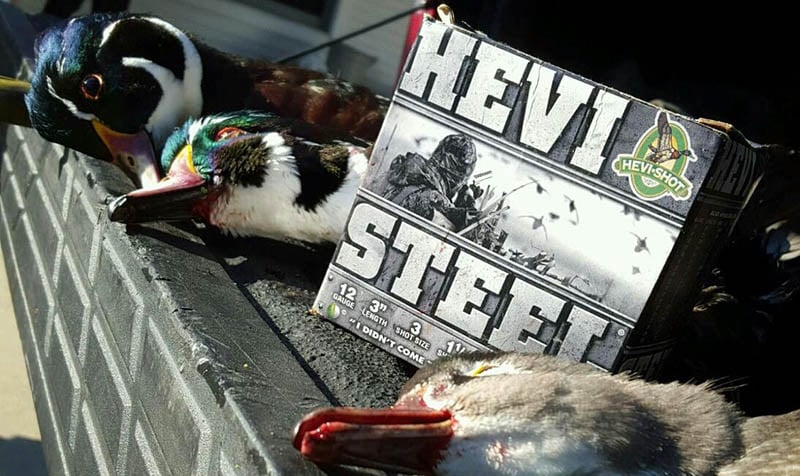
Odds-N-Ends
Andrew added that like good turkey callers, a good waterfowlcaller can “read” the birds actions and call accordingly. Some flocks like aggressive calling and flagging while others prefer a more passive approach. The only way to teach advanced calling strategies such as these are for someone to put a lot of hours in the field calling and observing. The internet is full of decent calling tutorials, and we all recommend checking them out.
Josh reiterated: “You need to be in the X, which is where they want to land. If you’re ‘running traffic,’ which means calling to migratory birds, then you gotta be decoying and calling like crazy.” He also added that if the birds “flare,” meaning they head toward you and then change directions really quickly to escape, then change the calls. For instance, if birds are coming in to his aggressive calling and his calling flares them, he’ll back off a bit.
Give it a Shot
No pun intended, but the point is, try waterfowl hunting! It is an absolute riot, and a great way to build lasting memories with friends and loved ones. Unlike big game hunting, human scent isn’t an issue in waterfowl hunting. Hunters can talk and laugh, eat snacks and drink coffee. But when that first “honk” or “quack” is heard, it’s game on, and it’s time to go back to hunting mode. If properly prepared, duck and goose is delicious. One of our family favorites is to make goose jerky. So, take a break from the deer this fall and try waterfowl hunting for a change of pace. And the rainier and windier the weather, the better waterfowl hunting. As luck would have it, bad deer days are great duck days!
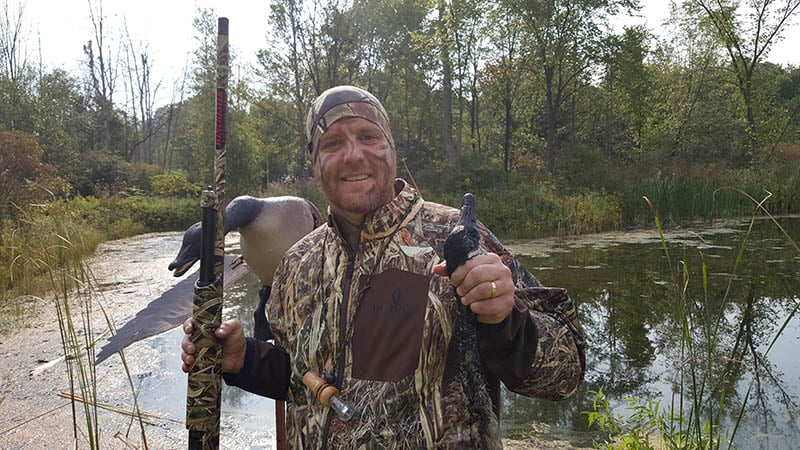

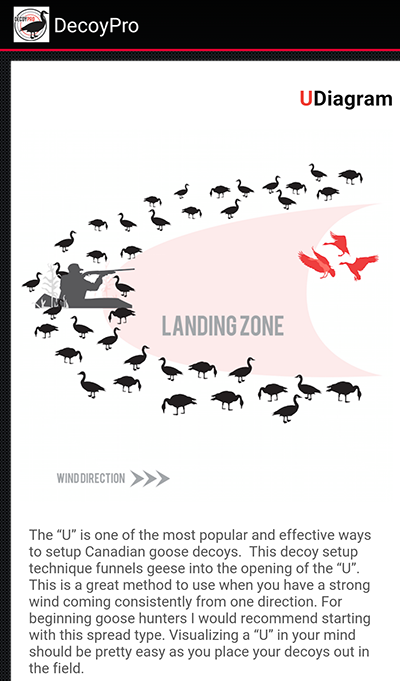
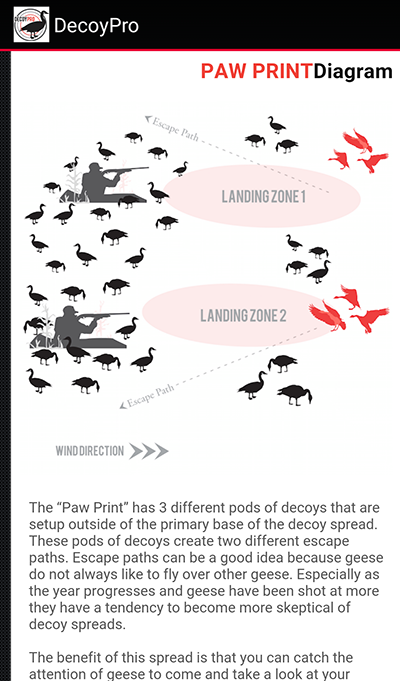




Leave a Reply